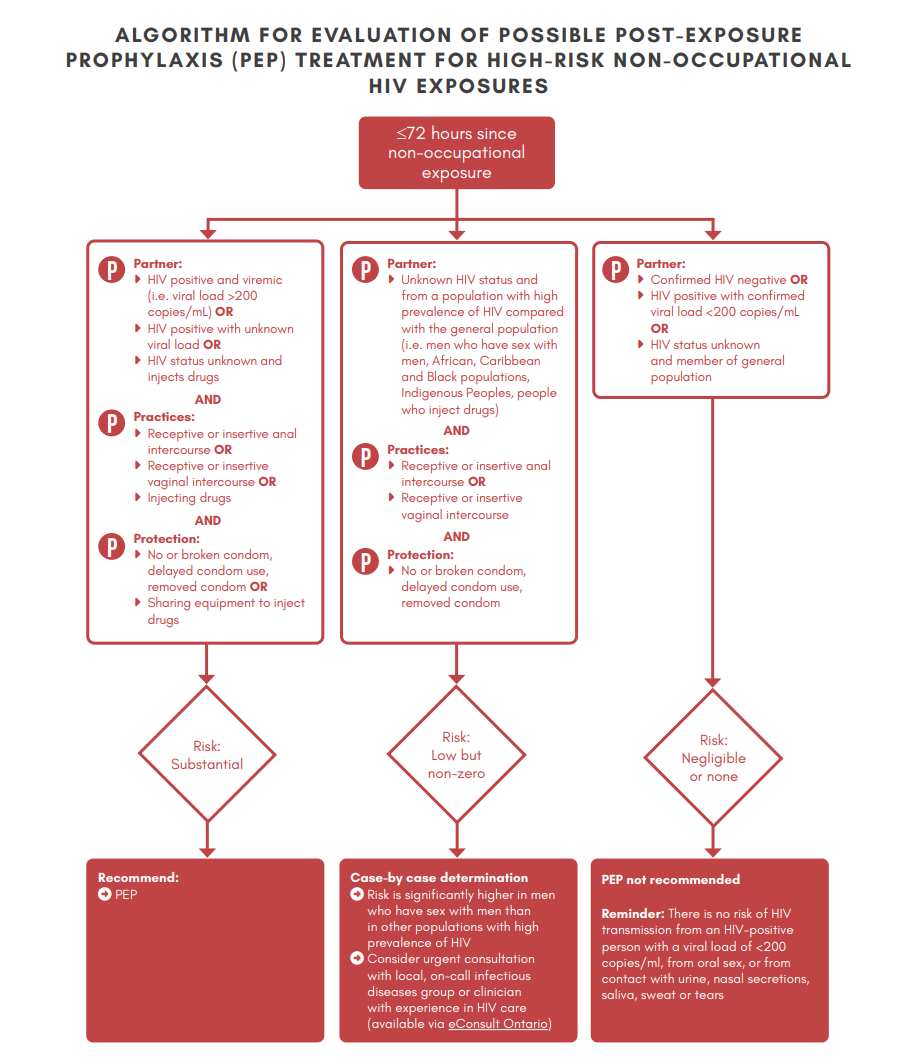Prescribing HIV Post-Exposure Prophylaxis
Post-Exposure Prophylaxis (PEP) is the use of antiretroviral drugs to prevent infection after an exposure to HIV has occurred. This involves taking a course of antiretroviral therapy lasting 28 days. Although PEP was originally used primarily for workplace exposures, PEP use is now recommended whenever a person presents for care within 72 hours of a potentially high-risk exposure to HIV. (See PEP Algorithm on pg. 12 of the Ontario Guidelines for Providers Offering HIV Testing for more about identifying high-risk exposures.) Canadian guidelines on non-occupational HIV PEP use are available.
PEP can reduce the risk of HIV infection by 80% if taken within 3 days of exposure and continued consistently (28 days). If your site does not provide PEP, suggest clients go to a hospital emergency room to get PEP. There are costs associated with PEP use for uninsured individuals, however PEP is provided without cost to sexual assault survivors.
Note that HIV testing is recommended in Ontario at three weeks and six weeks for laboratory-based testing and three weeks, six weeks and three months (for point-of-care testing only) after any high-risk exposure. If PEP use is not able to eliminate the HIV virus, it may make a new HIV infection harder to detect. Diagnosis may not be possible until later in the window period. Stress to individuals who choose PEP the importance of returning for testing at the end of their PEP cycle. For more PEP and testing, see Ontario Guidelines for Providers offering HIV Testing – HIV Testing Ontario.
